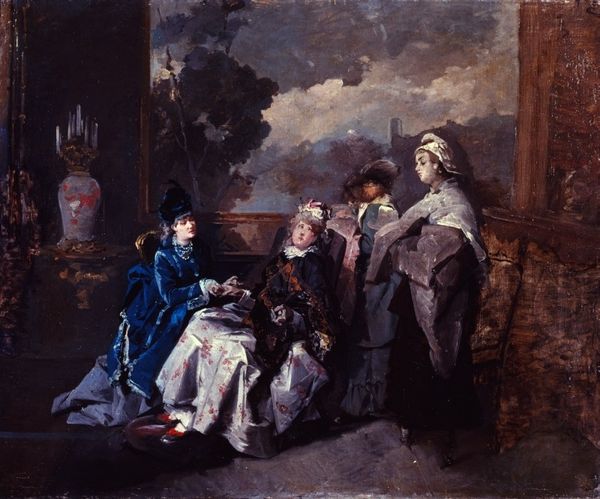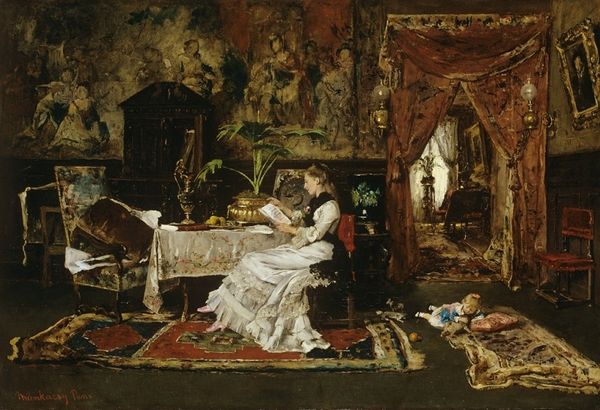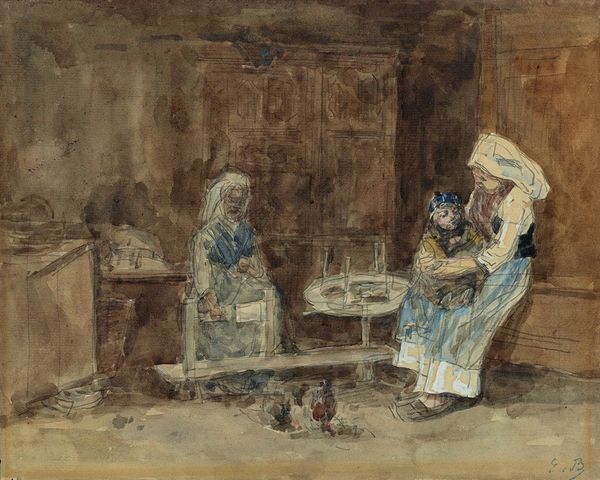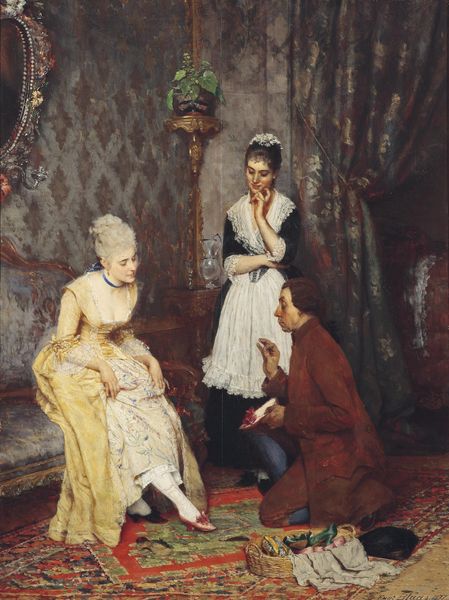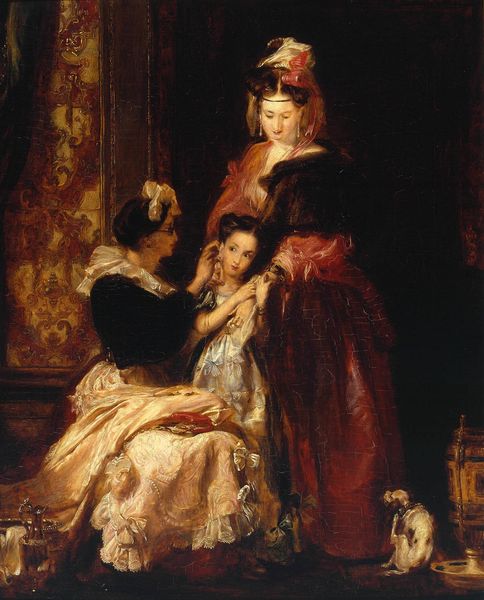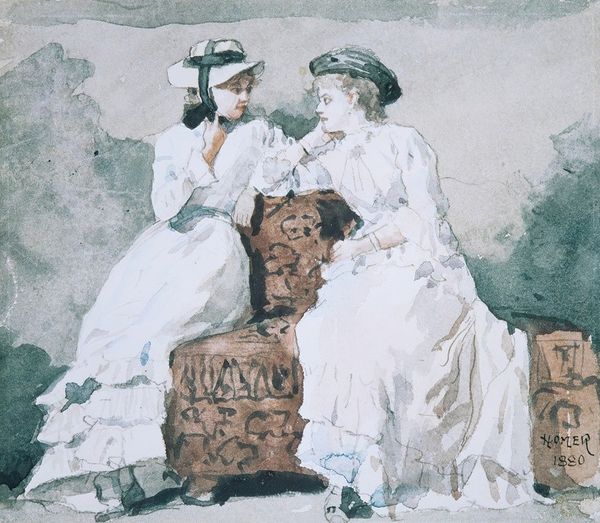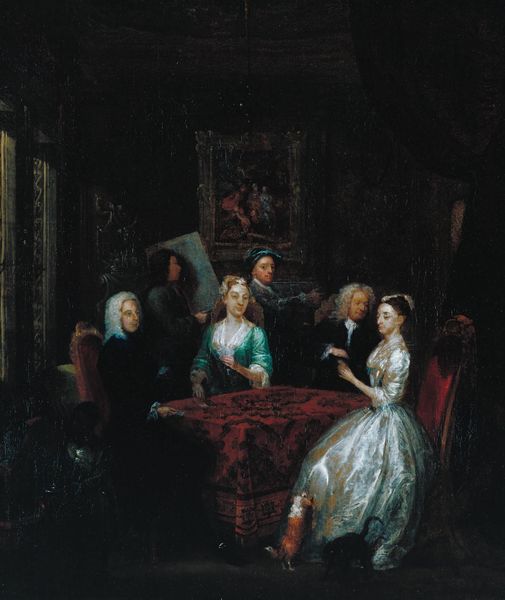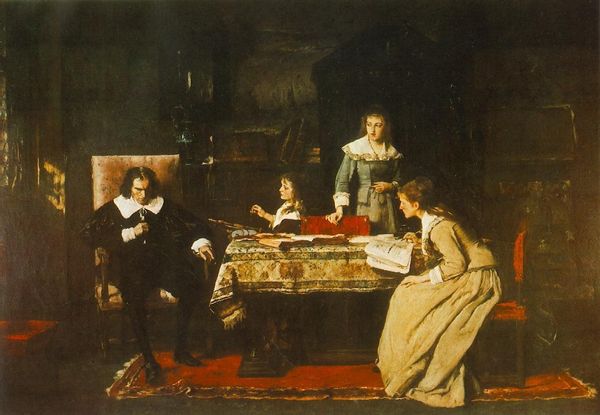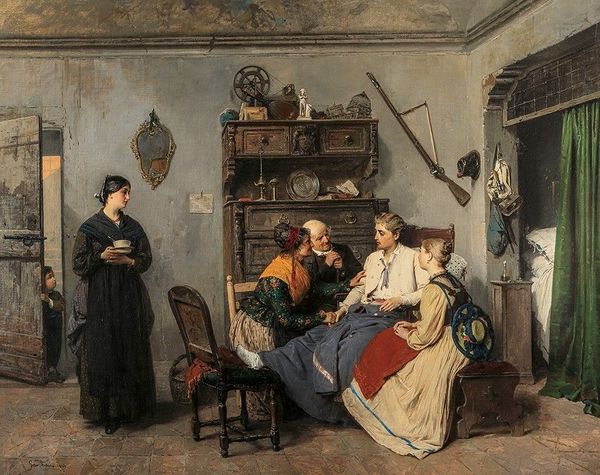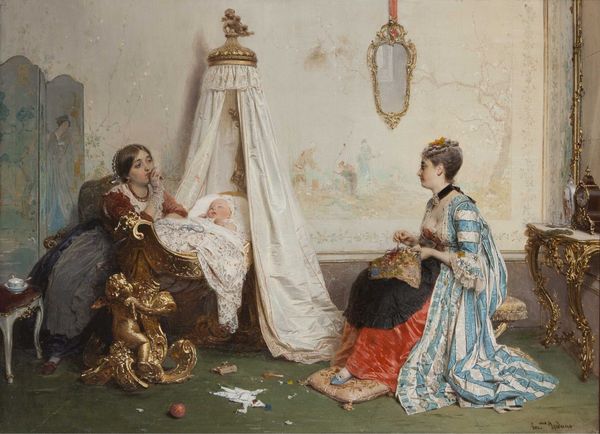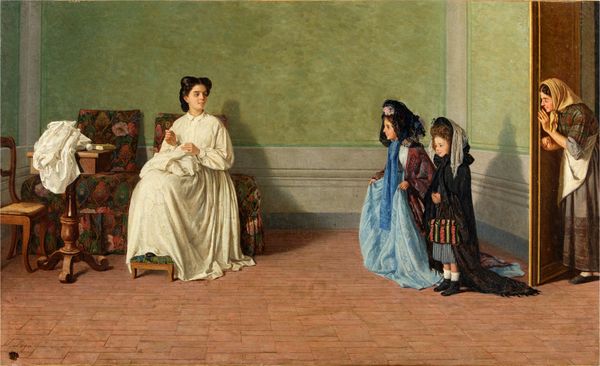
painting, oil-paint
#
conversation-piece
#
narrative-art
#
painting
#
oil-paint
#
genre-painting
#
history-painting
#
academic-art
#
realism
Copyright: Public domain
Curator: Here we have Mihály Munkácsy's "Baby Visitors," an oil painting dating back to 1879. Editor: My initial impression is one of contained, almost stifling domesticity. There's a stillness despite the interaction, a feeling of constraint suggested by the dark palette and the richly ornamented, but rather cramped, interior. Curator: Let’s consider the social and material circumstances behind creating a genre scene like this during the late 19th century. The elaborate setting-- the fabrics, furnishings-- speak to the tastes and wealth of the bourgeoisie, who were Munkácsy’s primary patrons. What kind of labor went into making the dresses? Think of the process involved in painting this grand interior with meticulous brushwork, it’s all about the mastery that affirms class status. Editor: Absolutely. Beyond the demonstration of wealth, this painting tells a particular story about women and their roles. Notice how the mother and caregivers are gathered around the baby, foregrounding their role in nurturing and continuing the family line. Yet the seated woman looks distant, almost melancholic, separate from the active scene. What expectations were placed upon women of this era concerning childbirth, family, and social life, and what burdens did this entail? Curator: Munkácsy, rooted in a tradition of realism, depicts the textures meticulously; see the sheen of satin and the soft cottons in the baby's swaddling clothes. Consider the choices behind the dark tonality; how might light itself serve a narrative function here, highlighting wealth but also generating a particular emotional response. Editor: I’m struck by the narrative that seems to be unfolding. The light singles out the young mother as almost angelic, framed by the other women surrounding her in care and support, a possible nod to the madonna figure. At the same time, it raises questions about who benefits from upholding these kinds of social dynamics. Curator: So it becomes more than just documentation. It transforms into a social document where artistic skill is deployed to articulate ideals, hierarchies and the flow of capital that supports them. The history, the subject and the method all create a dense network. Editor: Indeed. This seemingly quiet, intimate scene prompts us to reflect on broader narratives concerning gender, labor, and societal expectations within 19th century bourgeois life. Curator: Ultimately, Munkácsy gives us a detailed view into a very specific time and place. Editor: It pushes us to critically examine the legacies that continue to inform our understanding of identity and social relations today.
Comments
No comments
Be the first to comment and join the conversation on the ultimate creative platform.
